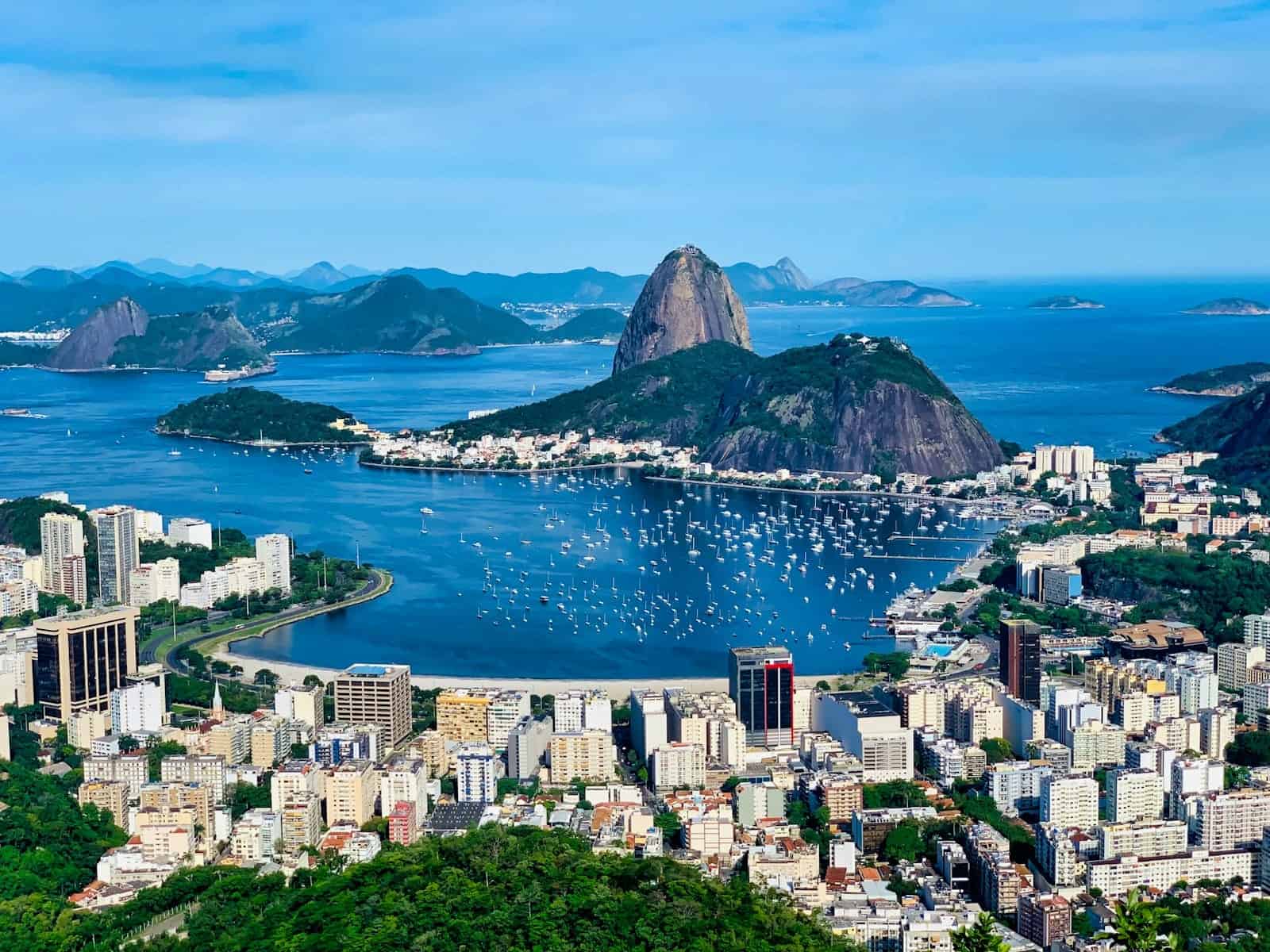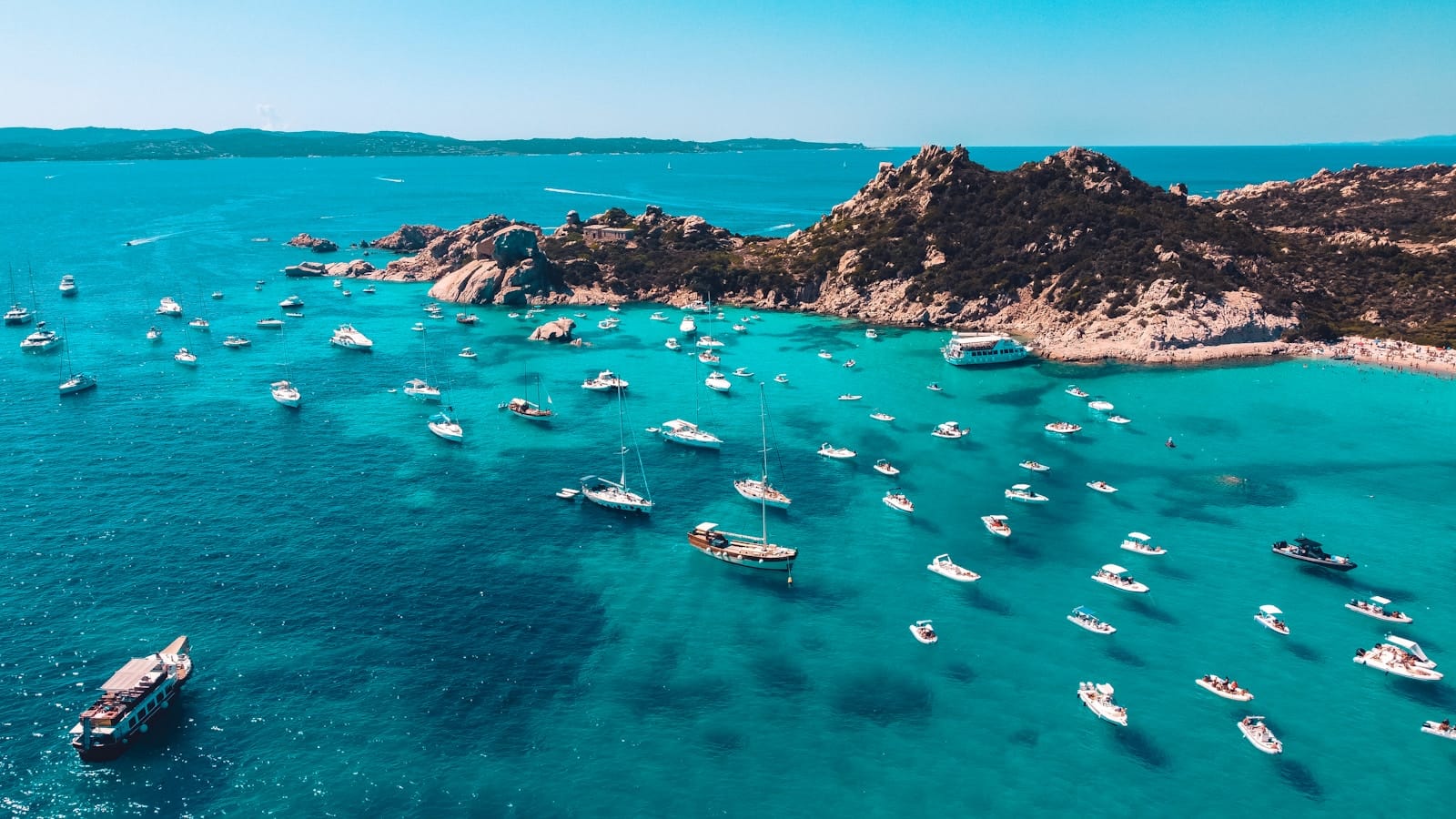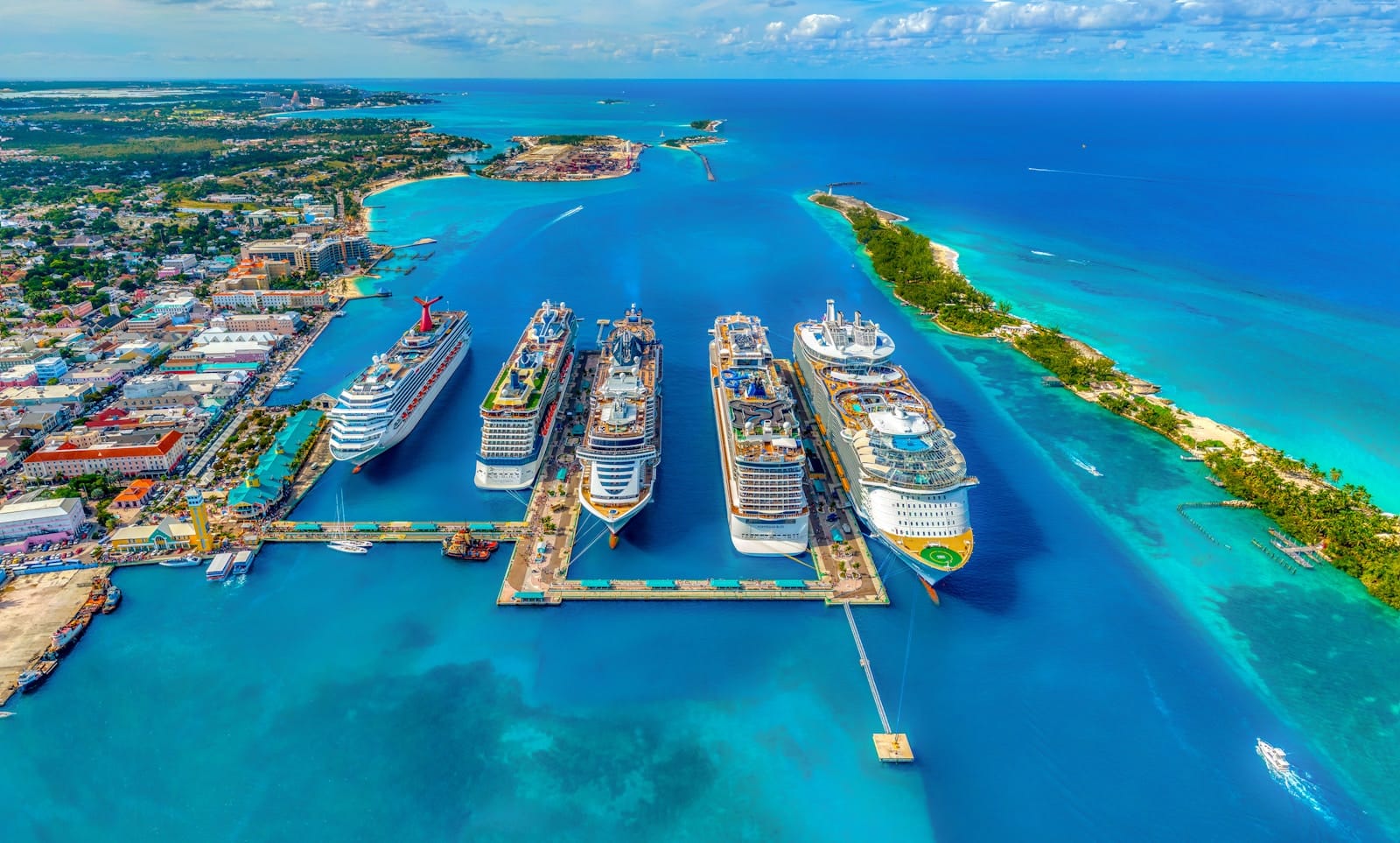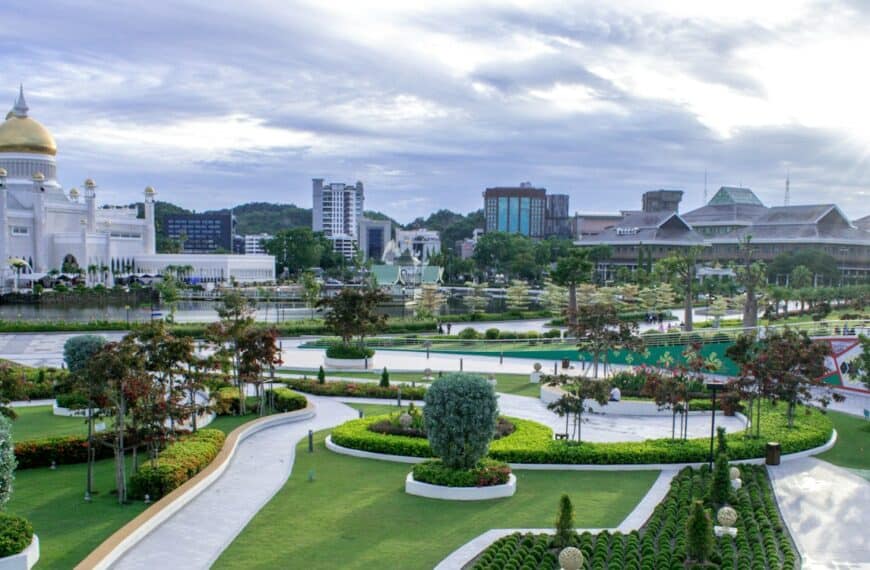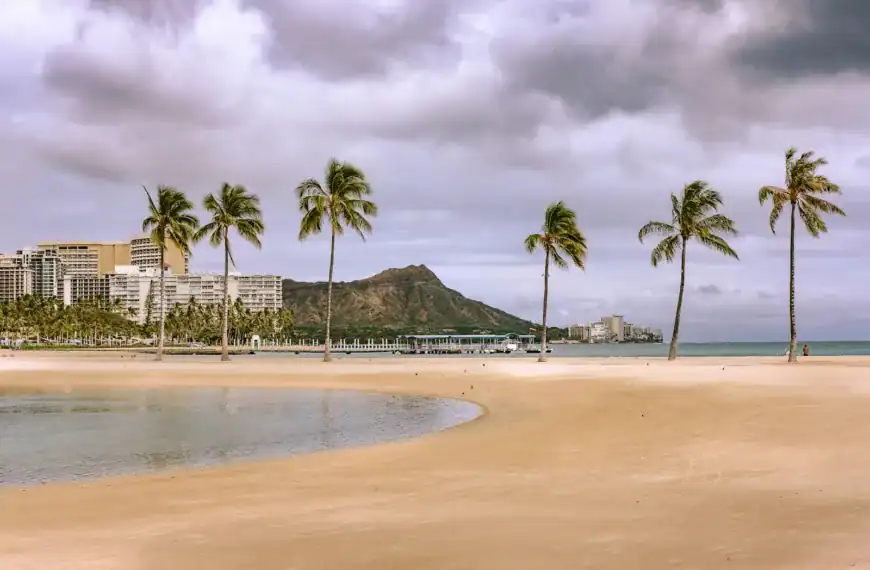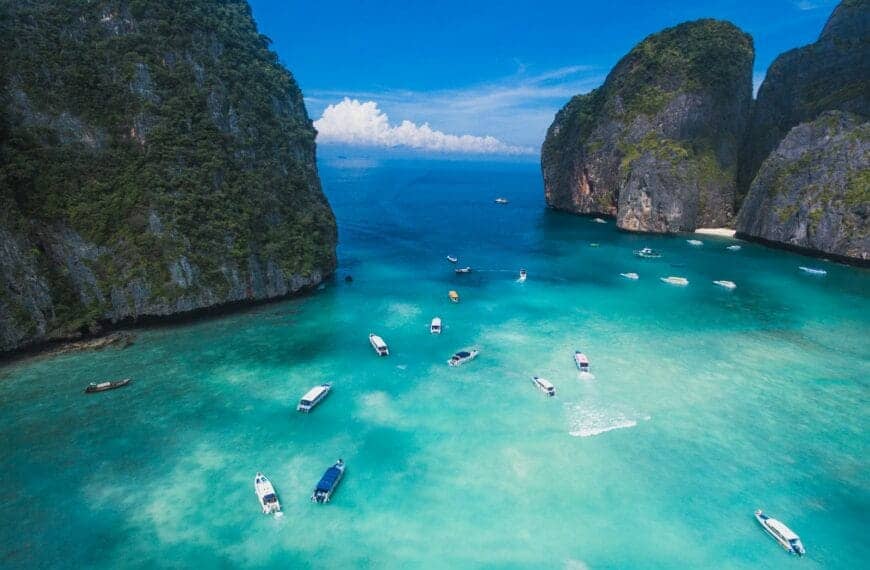Rio de Janeiro Travel Guide: Culture, Coasts & Adventure
Intro to Rio De Janeiro Travel Guide
From golden beaches and samba-filled streets to rainforest peaks and colonial towns, the state of Rio de Janeiro is a place where every corner hums with life, beauty, and rhythm. This is not just the home of Brazil’s most famous city — it’s a whole region steeped in contrasts, waiting to be explored.
Start your journey with our Rio de Janeiro Travel Guide and discover the magic of Brazil’s most vibrant state — from coastal getaways to historic mountain retreats.
💡Quick Facts:
Destination: Rio de Janeiro
Continent: South America
Country: Brazil
State: Rio de Janeiro
Area: 1,221 km²
Population: ~6.7 million (city), ~13.5 million (metro)
Density: ~5,500 people/km²
Capital: Brasília (national), Rio de Janeiro (state capital)
Regions/Subregions: Zona Sul (Copacabana, Ipanema), Centro, Zona Norte, Barra da Tijuca
Language(s): Portuguese (official); basic English spoken in tourist zones
Currency: Brazilian Real (BRL)
Time Zone(s): Brasília Time (BRT, UTC−3)
Airports: Rio de Janeiro–Galeão (GIG), Santos Dumont (SDU)
Climate: Tropical – hot, humid summers and mild, pleasant winters
Known For: Christ the Redeemer, Copacabana, Sugarloaf Mountain, Carnival, samba, beaches, favelas, Maracanã Stadium
🛂Arrival Info:
– U.S., Canada, Australia, EU: Visa-free for stays up to 90 days
– ETAs/eVisas available for some nationalities → Brazil Visa Info
– Passport must be valid for at least 6 months
– Entry stamp includes return/onward ticket requirement
💉Health Info:
– Recommended: Yellow Fever (especially if visiting jungle areas), Hepatitis A & B, Typhoid
– Mosquito protection advised year-round (dengue, Zika risk)
– Tap water not recommended for drinking
– Excellent private hospitals in Zona Sul and Barra
– Emergency care: UPA (urgent care clinics), private hospitals offer quicker service
✅ Check travel insurance options for travel emergencies, delays, and medical needs abroad — get coverage here
✅ Stay Informed with Official Updates: World Health Organization – International Travel and Health | Travel health updates
🚨Travel Advisory:
– U.S. State Dept: Level 2 – Exercise Increased Caution
– Risks: Petty theft, muggings, express kidnappings in tourist areas
– Avoid favelas unless part of an official guided tour
– Remain alert on beaches and in crowded metro areas
✅ Stay Informed with Official Updates: US Travel Advisory | UK Foreign Travel Advice
📅Holidays:
– Carnival (Feb/Mar): Parades, blocos, major closures
– New Year’s Eve (Dec 31): Copacabana fireworks draw 2+ million people
– Tiradentes Day (Apr 21): National holiday observed in Rio
– Rio’s Birthday (Mar 1): Local pride, some closures
– Note: Many national holidays are celebrated with local flair and samba events
💰Money Matters:
– Currency: Brazilian Real (BRL)
– ATMs available; avoid isolated ATMs or late-night withdrawals
– Credit cards widely accepted; some taxis require cash
– Tipping: 10% often included in restaurant bills; no need to tip taxis
– Cash essential for small kiosks, street food, and local shops
✈️Airports:
– Galeão International Airport (GIG): Main international gateway (~20km from city center)
– Santos Dumont Airport (SDU): Domestic hub near downtown and Sugarloaf
– Both airports connected by taxis, ride-share, and shuttle services
✅ Delayed or canceled flight? Check if you’re eligible for compensation
🚍Transport:
– Metro: Clean, safe, connects main areas (Zona Sul to Centro)
– Buses: Frequent but beware of theft; routes can be confusing
– Taxis: Use licensed taxis or apps like 99 and Uber
– Trams: Modern light rail connects Santos Dumont, port area, and downtown
– Avoid nighttime travel through isolated areas or empty beaches
✅ Book reliable airport transfers and in-city rides in advance. Reserve your ride here
📶Connectivity:
– Tourist SIMs from Claro, TIM, Vivo available at airport and shops
– Strong 4G in city zones; 5G emerging in central neighborhoods
– Public Wi-Fi in malls, cafés, and airports
– Mobile data is affordable and reliable
✅ Stay connected abroad with affordable eSIM data packs. Get your eSIM here
📜Laws & Etiquette:
– Drinking in public is legal but rowdy behavior may draw police attention
– LGBTQ+ travelers are welcome, but discretion advised outside main tourist areas
– Avoid flashing valuables or using phones openly in public
– Respect for samba culture, Afro-Brazilian traditions, and Carnival customs is appreciated
🛡️Emergency Info:
– Emergency: 190 (Police), 192 (Ambulance), 193 (Fire)
– Tourist Police: DEAT (located in Leblon)
– Travel insurance highly recommended due to theft risk and healthcare access
✅ Use embassy locator tools: Embassies Worldwide
🌦️Weather:
– Summer (Dec–Mar): Hot & humid (30–40°C), occasional rain
– Winter (Jun–Aug): Pleasant, dry, around 20–25°C
– Rain is common in November and February
– Best time to visit: May–October (drier, fewer crowds)
✅ Stay prepared—check the weather forecast for your destination — Weather Forecast
Rio de Janeiro Cities & Major Destinations
Rio de Janeiro state is home to a dynamic mix of city culture, island escapes, and highland colonial towns.
- Rio de Janeiro City
The state’s capital is a global icon — where the Christ the Redeemer statue watches over city beaches, rainforest trails, and rooftop samba bars. Visit Sugarloaf Mountain, stroll Ipanema, or hike through the Tijuca National Park for a deep dive into Brazil’s soul. - Paraty
This cobbled colonial town on the Costa Verde is beloved for its UNESCO-listed architecture, boutique pousadas, and creative arts scene. Surrounded by jungle hills and bay islands, Paraty is perfect for slow travel, boat tours, and Brazilian cuisine with a seafood twist. - Angra dos Reis
A launching point for island-hopping tours, Angra is fringed by hundreds of emerald isles, with Ilha Grande at its heart. It’s a paradise for snorkeling, sailing, and forested hikes to secret beaches. - Ilha Grande
This island gem has no cars and no stress — only waterfalls, hiking trails, and coastal villages tucked between the Atlantic Forest and calm waters. It’s one of the top places to visit in Rio de Janeiro for nature lovers. - Búzios
Once a fishing village, now a stylish beach town, Búzios mixes laid-back charm with boutique flair. With over 20 beaches, charming inns, and lively nightlife, it’s a favorite for couples, creatives, and those seeking sun with sophistication. - Petrópolis
Known as the Imperial City, Petrópolis blends European-inspired palaces, museums, and leafy mountain air. It’s ideal for history buffs and hikers looking for cooler temperatures in the Serra dos Órgãos range. - Teresópolis
Just north of Petrópolis, Teresópolis is a nature gateway. It’s the home base for exploring the rugged Serra dos Órgãos National Park — famous for its jagged peaks, like the “God’s Finger” rock formation, and its biodiversity-rich trails.
How to Choose Where to Go in Rio de Janeiro
This diverse state offers everything from rainforest islands to mountain getaways. Here’s how to narrow down the best regions for your travel style.
- For Beach & Island Escapes
Head to the Costa Verde. Angra dos Reis and Paraty deliver pristine beaches and lush coastal mountains. Ilha Grande is for those seeking nature, while Búzios offers a more cosmopolitan beach vibe. - For Culture & Colonial History
Paraty and Petrópolis shine with 19th-century architecture, local museums, and traditional festivals. Rio de Janeiro city itself is steeped in heritage — from Afro-Brazilian culture to Portuguese roots. - For Nature & Adventure
The mountainous interior is perfect for outdoor lovers. Teresópolis and Petrópolis are your launchpads for waterfall hikes, canyon views, and biodiversity. Ilha Grande also offers remote rainforest treks and coastal campsites. - For Urban Energy & Entertainment
Stay in Rio de Janeiro city for live samba, legendary street food, art galleries, and iconic viewpoints. From Copacabana nightlife to favela tours, the city pulses day and night.
Natural Escapes & Scenic Highlights
Rio de Janeiro’s landscapes range from rainforest-covered peaks to turquoise bays and hidden waterfalls.
- Tijuca National Park
One of the world’s largest urban rainforests, this park blankets much of Rio city. Hike to viewpoints like Pedra Bonita or Pico da Tijuca, explore hidden waterfalls, and see tropical birds flitting through the trees — all within minutes of city traffic. - Ilha Grande
This car-free island paradise is a treasure trove of biodiversity. Trails like the hike to Lopes Mendes Beach pass waterfalls, monkeys, and forested ridges. Snorkeling is stellar around Lagoa Azul, and boats can take you to secluded coves. - Serra dos Órgãos National Park
North of Rio city, this rugged park near Teresópolis and Petrópolis offers epic treks like the “Travessia” crossing, along granite peaks and high-altitude campsites. It’s a dream for climbers and experienced hikers. - Costa Verde Beaches
Along the southern coast, postcard-perfect beaches like Praia do Sono and Trindade mix surfing with jungle hikes. Many are accessible only by trail or boat, keeping crowds low and nature intact. - Arraial do Cabo
Just east of Búzios, this lesser-known coastal spot boasts Caribbean-blue waters, white dunes, and dramatic cliffs. Snorkeling, diving, and boat trips here are among the best things to do in Rio de Janeiro.
Cultural & Historic Landmarks
The state’s history runs deep — from Portuguese royalty to Afro-Brazilian traditions and modern-day innovation.
Christ the Redeemer (Corcovado)
One of the New Seven Wonders of the World, this iconic statue overlooks Rio from atop Corcovado mountain. It’s a must-visit, with panoramic views and religious significance.
The Imperial Museum (Petrópolis)
Housed in the former summer palace of Brazil’s last emperor, this museum showcases royal artifacts, period clothing, and 19th-century décor.
Santa Teresa Neighborhood (Rio City)
Wander cobbled streets, visit the Selarón Steps, and discover local art galleries and colonial mansions in this bohemian district.
Museu de Arte do Rio (MAR)
This modern waterfront museum blends contemporary exhibitions with local culture and history — part of the city’s cultural renaissance in the revitalized port zone.
Paraty Historic Center
Walking Paraty’s stone streets is like entering a living museum. Baroque churches, pastel buildings, and colonial squares come alive during annual festivals like Festa Literária Internacional de Paraty (FLIP).
Valongo Wharf
A UNESCO World Heritage Site in Rio’s port zone, this archaeological site once served as the main port of entry for enslaved Africans in the Americas. It holds deep cultural importance.
Cachaça Distilleries (Paraty)
The birthplace of artisanal Brazilian rum, Paraty is filled with family-run distilleries offering tastings and history.
Local Food, Arts & Experiences
Rio de Janeiro’s cuisine is diverse and deeply local — from beachside snacks to farm-fresh mountain fare.
- What to Eat
Try feijoada (black bean stew), seafood moquecas, or fried tapioca snacks known as “tapiocas.” Churrasco (Brazilian BBQ) is a must for meat lovers. - Street Food
On Rio’s beaches, grab queijo coalho (grilled cheese on a stick), pastel de camarão (shrimp pastry), or açai bowls topped with granola and banana. - Where to Eat
In Búzios and Paraty, dine at waterfront restaurants offering grilled fish, tropical cocktails, and a mix of Brazilian and Mediterranean flavors. In Petrópolis, enjoy German-influenced dishes and craft beer. - Festivals & Culture
Experience Rio Carnival — the most iconic festival in the country — or smaller local celebrations like Paraty’s literary fair or Petrópolis’ Bauernfest (German beer festival). Samba schools, capoeira circles, and Afro-Brazilian rhythms fill public spaces year-round. - Artisan Markets
Santa Teresa’s Feira do Lavradio and Paraty’s weekend craft markets offer handmade ceramics, jewelry, textiles, and woodwork.
Must-See Experiences in Rio de Janeiro
Some moments in Rio de Janeiro state are simply unforgettable — here’s what you shouldn’t miss.
- Watch sunrise from Sugarloaf Mountain
Take the cable car early and see the city light up from above — one of the most iconic things to do in Rio de Janeiro. - Explore the waterfalls of Serra dos Órgãos
Swim in crystal-clear jungle pools after hiking to Cascata Véu da Noiva or Poço Dois Irmãos. - Sail through Angra dos Reis
Hop on a schooner tour to snorkel, paddleboard, and beach-hop across hidden islands. - Hike to Lopes Mendes Beach on Ilha Grande
This 3-hour trek rewards you with powdery white sands and turquoise water — regularly ranked among Brazil’s best beaches. - Join a samba street party in Rio city
Especially during Carnival or weekends in Lapa, locals spill into the streets to dance, sing, and celebrate. - Ride a jeep through Tijuca Rainforest
Half-urban safari, half nature walk, these guided tours offer wildlife sightings and epic viewpoints.
Book immersive Rio de Janeiro tours and experience unforgettable things to do in Rio de Janeiro — from sacred temple rituals and highland treks to floating markets and lakeside food adventures.
Getting Around Rio de Janeiro
Transportation in the state is diverse — from coastal ferries and mountain buses to city metros and shared jeeps.
Within Rio de Janeiro City
Rio’s metro is fast, affordable, and connects most major districts. BRT buses, yellow taxis, and rideshare apps like Uber and 99 are widely available. Bike paths line beaches and central parks, with rental services like Tembici.
Costa Verde & Coastal Regions
Buses link Rio city to Paraty, Angra dos Reis, and Búzios. From Angra, ferries and schooners connect to Ilha Grande. Boat transfers should be booked ahead, especially during weekends or holidays.
Mountain Regions (Petrópolis, Teresópolis)
Intercity buses run regularly from Rio city to Petrópolis and Teresópolis (2–3 hours). Within towns, local buses and taxis work well, though most attractions require short hikes or private tours.
Car Rentals & Road Trips
A rental car is ideal if you want flexibility — especially when exploring remote beaches, waterfalls, or planning a multi-stop itinerary. Highways are in good condition, but mountain roads can be narrow and winding.
Travel Tips
– Ferries to Ilha Grande often depart from Conceição de Jacareí or Mangaratiba, not just Angra.
– Plan around traffic if entering or exiting Rio city — Friday afternoons and holiday weekends are notoriously congested.
– Ask about road closures during rainy season in mountainous areas.
Best Time to Visit Rio de Janeiro
Each season in Rio state offers something different — from beach days to cultural festivals and forest hikes.
- Summer (December–March)
This is peak beach and Carnival season. Expect hot, humid weather and lively streets. Best for parties, sunbathing, and coastal activities — but book early and prepare for higher travel costs in Rio de Janeiro during this period. - Autumn (April–June)
Shoulder season brings pleasant temperatures, fewer crowds, and good value. Excellent time for hikes, waterfalls, and scenic drives inland. - Winter (July–August)
Mild temperatures and clearer skies make this the best time for mountain towns like Petrópolis and Teresópolis. It’s also prime hiking season — dry trails and great visibility. - Spring (September–November)
Warm days return without the humidity. Coastal flowers bloom, and outdoor festivals ramp up. A great all-around time for both nature and culture-focused Rio de Janeiro tours. - Rainy Season Notes
Heavy rains mostly hit January–March. While this enhances waterfalls, it can lead to transport delays and muddy trails.
Best Travel Itineraries in Rio de Janeiro
Choose the right rhythm with these curated sample itineraries based on trip length and interests.
Classic 7-Day Rio Itinerary
– 3 days in Rio city: Christ the Redeemer, Sugarloaf, Lapa nightlife
– 2 days in Paraty: Colonial town, island boat trip
– 2 days in Ilha Grande: Lopes Mendes Beach, forest hiking
10-Day Nature & Culture Combo
– Rio city (2 nights)
– Petrópolis (2 nights): Imperial museum, mountain walk
– Teresópolis (2 nights): Serra dos Órgãos hikes
– Ilha Grande (4 nights): Remote beaches and waterfalls
5-Day Coastal Escape
– Day 1: Arrive in Rio, beach afternoon
– Day 2: Angra dos Reis boat trip
– Day 3–4: Ilha Grande jungle trek + snorkeling
– Day 5: Return to Rio via Paraty stopover
Travel Safety & Etiquette in Rio de Janeiro
With the right preparation, Rio de Janeiro state is a safe and deeply rewarding destination.
Urban Safety
In Rio city, avoid displaying valuables. Stick to well-lit streets at night and ask locals or hotel staff for neighborhood guidance. Popular areas like Copacabana and Lapa are lively but keep alert.
Nature & Hiking
Always hike in daylight and preferably with a guide — especially in dense forest trails on Ilha Grande or Serra dos Órgãos. Weather can shift quickly in the mountains; carry layers and plenty of water.
Beach Tips
Don’t leave belongings unattended. Use waterproof phone cases, and bring small cash for snacks or chair rentals.
Driving
Mountain roads are often steep and curvy — drive slowly, especially after rain. Watch for pedestrians in small towns.
Local Norms
– A friendly greeting goes a long way: “bom dia,” “boa tarde,” and “boa noite.”
– Cover up when entering churches or historic buildings.
– Always ask permission before photographing people, especially in rural or indigenous communities.
Nearby Countries to Explore
Expand your South American adventure by pairing Rio de Janeiro with one of these culturally rich and geographically close countries.
- Argentina
Just a short flight from Rio, Buenos Aires offers tango, European architecture, and steakhouse culture. Head further south to explore Patagonia or the wine regions near Mendoza. - Uruguay
Catch a quick flight or ferry via São Paulo to Montevideo or Punta del Este. Uruguay is known for relaxed beach towns, boutique wineries, and a calm, coastal vibe. - Paraguay
Often overlooked, Paraguay offers a quieter cultural experience. Visit Asunción’s historic center or the Jesuit ruins near Encarnación for a dose of colonial and indigenous heritage. - Chile
Fly west to discover Santiago’s cosmopolitan buzz, the colorful coastal city of Valparaíso, or venture into the Atacama Desert for surreal landscapes and starry skies.
Final Planning Checklist for Rio de Janeiro
- Book Carnival and New Year’s accommodations at least 6 months in advance
- Reserve island boat transfers (especially to Ilha Grande) early
- Pack breathable clothes, hiking shoes, and bug repellent for forest regions
- Download Portuguese offline translation and local transport apps (e.g., Moovit, Maps.me)
- Learn basic Portuguese phrases — English is not widely spoken outside tourist zones
- Bring a waterproof dry bag for boat trips and rainy season travel
- Pair your Rio trip with either inland mountains or another coastal state for contrast
- Always carry small change — not all beach vendors accept cards
- Respect community rules when entering indigenous or protected areas
For more expert travel tips, practical strategies, and trusted tools — visit our Homepage and get inspired for your next trip.

